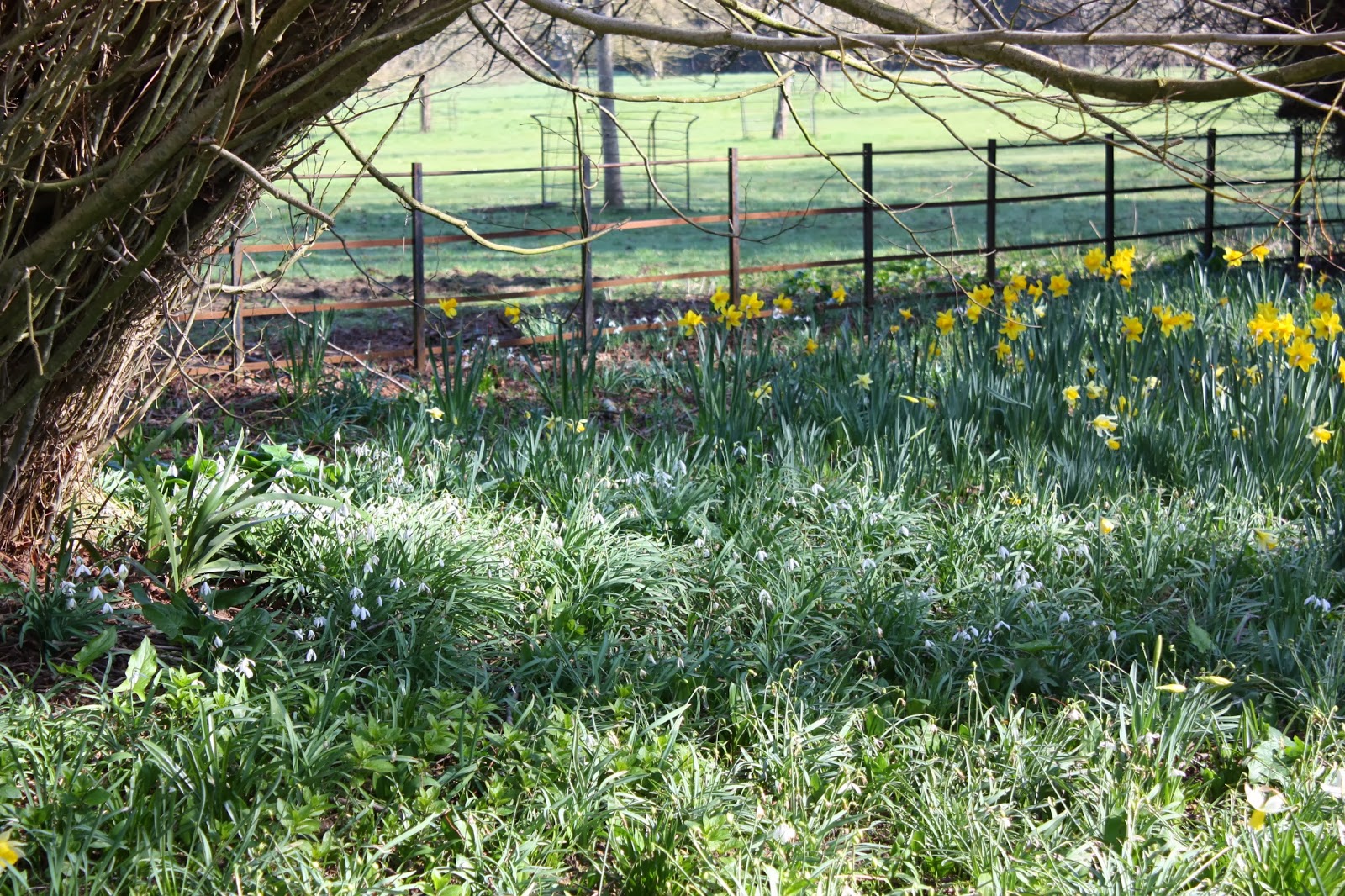Last summer we had builders here for months, replacing an old tumble-down outbuilding, and doing some roof repairs on the house. When they had finished and gone away, Mr DW used some of the left-over tiles and wood to make a wildlife hotel. He based the design on several that we had seen on wildlife websites, trying to make a shelter that has numerous nooks, crannies and hiding places for insects and maybe small mammals or birds.
It still needs two more ridge tiles on the roof, but it seems to have kept dry inside, despite the relentless heavy rain of this winter.
Most of the holes and tunnels were filled with natural material such as hay, straw, dry autumn leaves, sticks and pieces of bark. Horse hair and moss were added so provide warm bedding.
Wild rose hips, crab apples, acorns and chestnuts were scattered inside to provide food.
Upturned flower pots may give a home to some small creature.
Hopefully the narrow gaps between these tiles might be a place for a chrysalis to hide.
This garden is on the edge of New Forest heathland and would become a wilderness if left to nature. Seeds from Forest trees would drift in and germinate.
We try to compromise. Nature is encouraged and there are plenty of "wild flowers in the wrong place".
Ground elder is the only plant that we have to work really hard to control. It drives Mr DW mad.........!
Over the winter, leaves are left under some trees so that birds can root around to find insects and earthworms. Blackbirds, thrushes and starlings love this area underneath the liquid amber tree.
In wild corners of the garden there are several piles of old logs and branches rotting away. This pile has been here for years and we have seen stag beetles nearby.
Under the fence beside the yard there are several rodent holes this spring. Probably mice. We do have shrews, pigmy shrews and voles in the hedgerows.
Old mouse holes are valuable nests for some species of bumble bee.
A dead hawthorn by the pond has supported honeysuckle and ivy for some years. Sadly, it all fell down in the Valentines Day Storm.
The partially hollowed trunk will be good insect food, so we need to find an unobtrusive place in the undergrowth for the old tree to rot away and still be useful.
The raised vegetable beds need sorting out for replanting, but over the winter we left some areas fallow. A few overgrown courgettes have provided food for mice and insects. Some teasels have stayed over winter and the seed eating birds have loved them.
A few years ago, a large conifer fell over in a storm. Some of the logs were used to make a log wall. The old boundary hedge above it is a mixture of hawthorn, holly, bramble ivy and honeysuckle. This hedge is always full of birds, whatever the season. Blackbirds and thrushes perch to sing in the overhanging oak and a family of sparrows gathers to cheep and chatter.
Ivy grows in most of the hedges and both its flowers and seeds are valuable to wildlife.
It has been a chilly start to spring over the last two days, but a few early flowering plants are in bloom.
Flowers give nectar to butterflies and bees, while the hazel catkins are a feast for blue tits.
The tightest tree buds are beginning to swell and early willows are showing green leaves.
Even when the wind blusters cold again and rain showers blow in, the sight of bright garden flowers lifts the spirits. It has been a long, wet, grey winter here. Watching the birds begin to nest and butterflies visiting flowers has been a very welcome sight.




















































